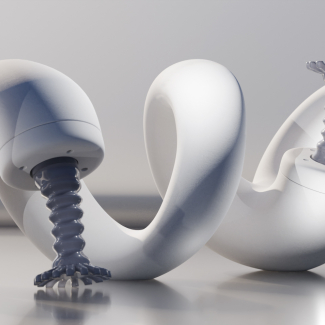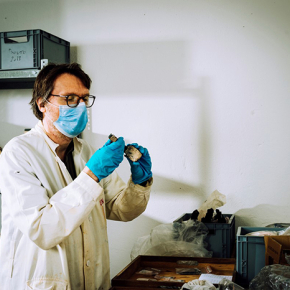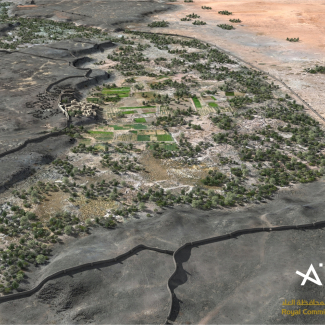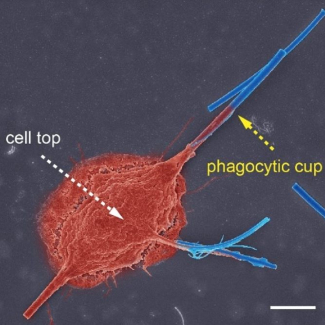
Notre Dame: First Gothic cathedral to make massive use of iron
Is Notre Dame the original Iron Lady? Evidence of the earliest known use of the metal for the construction of a Gothic cathedral has been uncovered by a team of scientists1 working at the Notre Dame research site (CNRS / French Ministry of Culture). Among the tons of metal revealed by the fire, the team was especially interested in the thousands of iron cramps used on all levels of the structure to hold its stone blocks together. Many were previously unknown to exist, including a series of cramps at the tops of the walls, below the burnt roof structure. The restoration of the cathedral now in progress—led by Rebâtir Notre-Dame de Paris (‘Rebuild Notre Dame’), the contracting public entity, and executed under the direction of French conservation architects—offered an opportunity to study twelve of these cramps. Samples taken were submitted to thorough metallographic analysis and radiocarbon dating made possible through new methods developed by the scientists. Their findings, published in PLOS ONE (15 March 2023), show that Notre Dame’s oldest iron cramps date to the 1160s, when the cathedral was being erected. Those from the tops of the walls are from the beginning of the 13th century, just before the second medieval framework was added. All were inserted during the course of construction. These discoveries tell us that Notre Dame is indisputably the first Gothic cathedral that used iron as a building material in its own right to bring a pioneering architectural design to life. Extensively used to join stones, metal components cling to the structure along its vertical ascent. First implemented at Notre Dame, this innovation spread and was integrated into edifices at Chartres, Bourges, Beauvais, and elsewhere.

© Cyril Fresillon / IRAMAT / NIMBE / ArScAn / CEA / Chantier Scientifique Notre-Dame de Paris / French Ministry of Culture / CNRS

© Cyril Fresillon / IRAMAT / NIMBE / ArScAn / CEA / Chantier Scientifique Notre-Dame de Paris / French Ministry of Culture / CNRS
Other pictures available sur la plateforme CNRS Images.
- 1The members of the team hail from the Archéologie et Sciences de l’Antiquité (CNRS / MC / University of Paris 1 Panthéon-Sorbonne / University Paris Nanterre) research laboratory; the Centre de Recherche sur la Conservation (CNRS / MC / MNHN); the Laboratoire de Mesure du Carbone-14, a national unit affiliated with the CNRS, the CEA, the IRD, the IRSN, and the MC, and run by the Laboratoire des Sciences du Climat et de l'Environnement (CNRS / CEA / UVSQ); the Institut de Chimie et des Matériaux Paris-Est (CNRS / Université Paris-Est Créteil); IRAMAT (CNRS / Université d’Orléans); and the Nanosciences et Innovation pour les Matériaux, la Biomédecine et l'Énergie (CNRS / CEA) research laboratory.
Notre-Dame de Paris: the first iron lady ? Archaeometallurgical study and dating of the Parisian cathedral iron reinforcements. Maxime L’Héritier, Aurélia Azéma, Delphine Syvilay, Emmanuelle Delqué-Kolic, Lucile Beck, Ivan Guillot, Mathilde Bernard et Philippe Dillmann. PLOS One, le 15 mars 2023.


